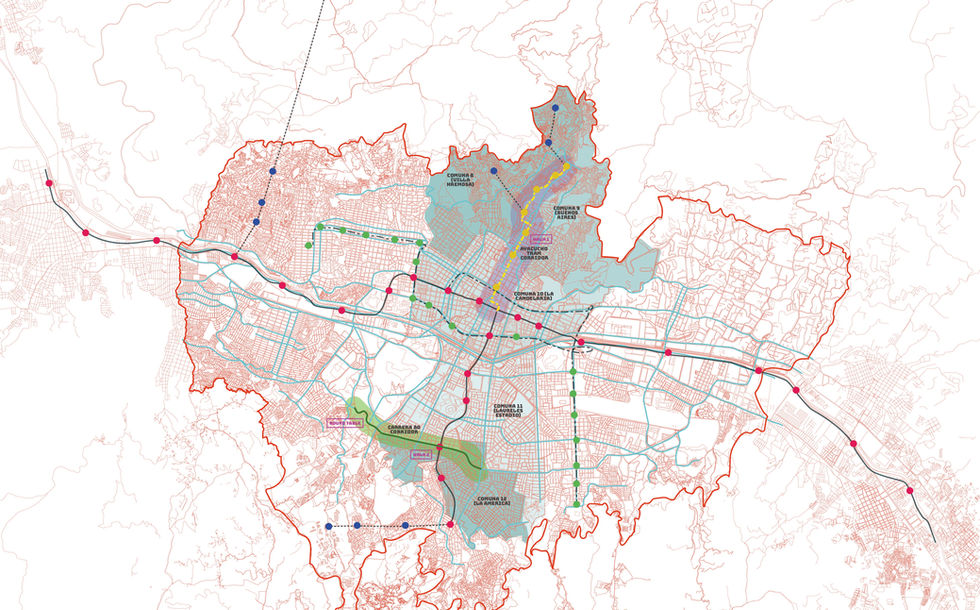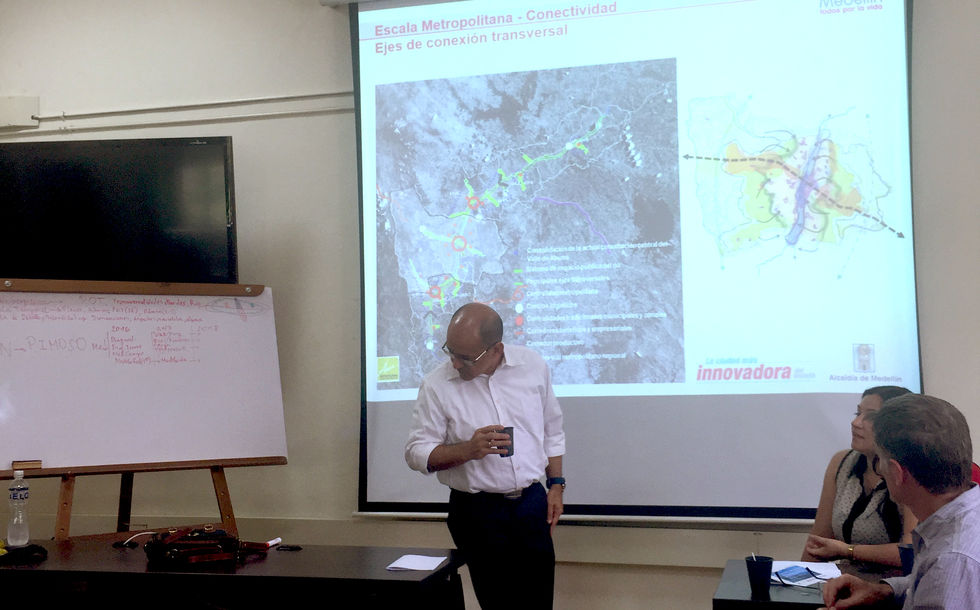mobility & socio-spatial integration
The Mobility and Socio-spatial Integration theme was led by Soledad Garcia Ferrari and Françoise Coupé. The overarching question formulated at the outset of the project for the theme was:
What has been the impact of the innovative mobility strategies on quality of life and social equity?
When the MUI project began, the mass transportation strategies that had been implemented in Medellín since the 1990s were being acclaimed internationally as major contributors to urban innovation. When the prize was awarded for most Innovative City in 2013 by the Urban Land Institute, their statement made special mention of Medellín’s unique mobility strategies.
The acclaim was not unfounded. Metro de Medellín is the only rail-based mass transportation system in Colombia. The metro first became operational in 1995. It was financed through a Private Public Partnership (PPP) led by the Mayor’s office. The metro continues to be operated through a private company called Metro de Medellín. Amongst its infrastructure and services, Metro de Medellín manages four different types of lines: an overground rail metro (mostly elevated); a metrocable system; a bus rapid system; and a tramway. The Metro de Medellín has, since 1995 when it began operation, endorsed a social programme called ‘Cultura Medellín’ that promotes cultural, educational and sustainability-orientated projects. Cultural Metro was established as a way of introducing – together with the physical infrastructure – an accompanying programme that would teach residents about civic behaviour in public spaces and caring for the transport infrastructure. The MUI team thus approached the theme as an enquiry into mobility together with socio-spatial integration.
The focus of this theme emerged from the most recent amendment to the Land Use Plan (Plano de Ordenamiento Territorial – POT) in 2014 that prioritises transversal ‘mobility corridors’ across the Aburrá Valley. Land Use strategies have emphasised the nature of the areas adjacent to the actual mobility link, generating proposals that engage with public space, quality of the environment, cycling routes, green infrastructure, etc. which affect access and use of spaces in the city and therefore wellbeing and quality of life of its inhabitants. MUI has been concerned with the links between the proposed spaces associated to mobility networks and the way these have actually achieved socio-spatial integration.
Since the POT 2014 clearly correlates mobility corridors with the ecological structure of Medellín, the activities for this theme were undertaken in close collaboration with activities for Theme 02, ‘Public Space Green Infrastructure and Wellbeing’, using the Santa Elena water course as a starting point for further investigation.
The ‘mobility corridors’ generated through the extended infrastructure network are therefore understood as both public space and as alternatives to the urban connectivity of the cityTwo similar scoping studies have been formulated within the theme of mobility and social-spatial integration. The first focuses on the ‘mobility corridors’ of the Santa Elena stream basin, where a new tram route was opened in 2015. Another scoping study uses an undeveloped route as a baseline. The corridor of the future tram along the Carrera 80 is a mobility corridor where a tram route is planned but work has not yet begun.





